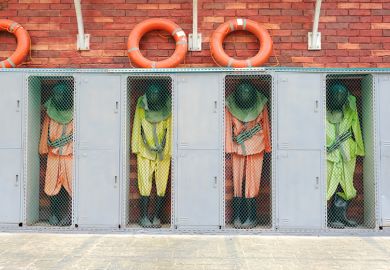History may be written in many ways, and Christopher Harding reveals his approach when speaking about a famous Japanese folklorist: “to really understand life, you didn’t try to describe it – you told stories about it”. Hence the title of his book, I suppose, and indeed almost every chapter starts with a story about one or two named people. The chapter headings are imaginative, the writing stylish and there are numerous photographs. All of Harding’s many references are to be found at the back of the book, along with a detailed chronology, and there are no footnotes, so in theory his book should read smoothly, telling us the story of Japan’s search for nationhood from 1850.
In practice, the book tells many stories and is indeed a fascinating account of many aspects of Japanese life, but it is not a smooth read. It is long and at times quite convoluted, alternately shocking and charming – certainly an antidote to recent UK television coverage of Japan’s art and beauty. It spares no detail in examining terrible industrial mistakes and disasters, the ensuing protests, and the lengths and artistic heights to which protesters would go, unsurprisingly in the only nation ever to have suffered attack from atomic bombs, against the continuing use of nuclear power.
This is the story of a century and a half of becoming “modern”, of how diverse Japanese people responded to the foreign, at least since Europeans and Americans arrived in abundance in the mid-19th century. We learn how they strived, and still strive, to create and maintain a Japanese nation to match any other, while incorporating and often improving science and technology from abroad.
The context includes man-made disasters such as wars and the fatal sarin gas attacks on the central Tokyo underground system as well as the lack of sufficient precaution about unexpected natural ones such as earthquakes and tsunami. It also includes intriguing detail about the people and motivations behind the launch of now famous names such as Sony, Nissan and Studio Ghibli, as well as films and computer games, and even the take-off of the ubiquitous convenience store (konbini). At the end (what the title describes as “the present”), the book anticipates a new imperial era and the Olympic Games in 2020 which, like the previous ones in 1964, offer an opportunity to raise Japan’s falling status in the world.
I slightly got the impression that the author found it difficult to stop. He is clearly very well informed about Japanese people, their politics, their psychiatry, their spirituality and their rich and sometimes startling imaginations. I don’t want to discourage readers because there is much of value here, although the book is long.
The stories at times lead very much into the heart of real life, as writers in my own field of social anthropology do. It is only a pity that the author falls into the trap afflicting some economists and political scientists of dismissing some good anthropology by failing to distinguish it from the notorious and less discipline-based nihonjinron (“theories of the Japanese”).
Joy Hendry is professor emerita of anthropology at Oxford Brookes University, the author of many books on Japan and is presently working on a 5th edition of Understanding Japanese Society (Routledge Asian Studies).
Japan Story: In Search of a Nation, 1850 to the Present
By Christopher Harding
Allen Lane, 528pp, £25.00
ISBN 9780241296486
Published 1 November 2018
POSTSCRIPT:
Print headline: Tales of the land of the rising sun
Register to continue
Why register?
- Registration is free and only takes a moment
- Once registered, you can read 3 articles a month
- Sign up for our newsletter
Subscribe
Or subscribe for unlimited access to:
- Unlimited access to news, views, insights & reviews
- Digital editions
- Digital access to THE’s university and college rankings analysis
Already registered or a current subscriber?







